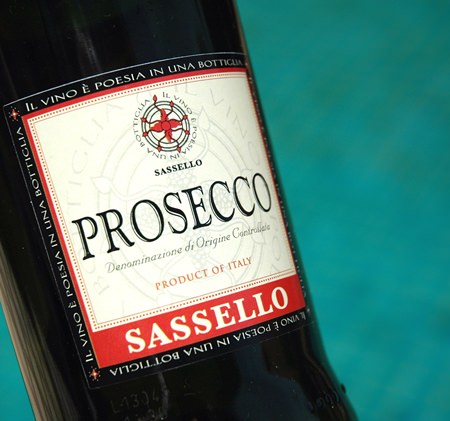Remember that song? Don McLean, 1971. I rather liked it, although I could never make much sense of the words. But perhaps McLean just wrote lyrics which sounded vaguely euphonious and left other people to try and make sense of them. Even so, the enigmatic verses do seem to have an old-fashioned American quality about them, a bit like Thanksgiving, I suppose. Although the Pilgrims came from England, Thanksgiving is virtually unknown there. The nearest the Brits get to it is a rather perfunctory Harvest Festival, when asinine Victorian hymns are sung in churches and elementary schools decked out for the occasion with bunches of flowers, sprigs of corn and other melancholia. In Britain, the only people who celebrate Thanksgiving are the few American ex-pats who have found that they can endure the British weather, possibly one of the reasons the Pilgrims cleared off in the first place.
Americans owe a lot to the indomitable Sarah Josepha Hale, because she spent forty years campaigning for an annual Thanksgiving holiday. When she wasn’t on the campaign trail, she was writing books and poetry, editing ladies’ magazines and doing noble deeds, like founding the Seaman’s Aid Society. She was also the author of one of the finest pieces of lyrical English poetry, the enduring Mary Had a Little Lamb. Given her consuming interest in Thanksgiving, perhaps she should also have written Mary Had a Little Turkey, but I admit that the title doesn’t quite have the same ring to it.
This week, let’s look at some wines which are ideal for the traditional Thanksgiving Dinner, bearing in mind what’s available locally. But first things first, as one of my maiden aunts used to say at every opportunity. She had an extensive repertoire of similar expressions, which when you thought about them for long enough, turned out to be virtually meaningless. Now I come to think about it, she was the same aunt who could never grasp the difference between Lebanese guerillas and lesbian gorillas. Anyway, where was I? (I wish I knew – Ed.) Ah yes, Thanksgiving.
 Prosecco: a cheap alternative to Champagne
Prosecco: a cheap alternative to Champagne
I don’t know about you, but I always think it’s a nice touch to be handed a glass of wine on arrival. This helps to break the ice when people are standing around attempting conversation. And there’s nothing better than a sparkling wine to get a social event going with a swing. If money is no object, buy some decent Champagne, but if you suspect that your guests can’t tell the difference between Veuve Clicquot and Spy Wine Cooler, settle for a cheap sparkler instead. They’re often very good wines and you can always conceal the label by wrapping a white cloth around the bottle, revealing only the champagne-like foil at the top. Some people might even assume that they’re getting The Real Thing. Far be it from me to encourage dishonesty, but we live in challenging times. And talking of challenges, it’s becoming a challenge to get those wretched gorillas out of my head.
Oh yes, sparklers labelled “Brut” or “Extra Brut” are usually refreshing, dry and crisp. If the wine is labelled “Extra Dry” it will be a bit sweeter. Yes I know, strange but true. And by the way, because of recent tax increases, the prices shown here are only a guide.
| · Champagne Bauget-Jouette Brut (France): Classic budget champers, elegant, creamy, Bt. 1,999 @ Wine Connection. · Santa Julia Extra Sparkling Brut (Chile): Aroma of fresh apples, apricots, white peaches and citric acidity, Bt. 599 @ Central & Tops. · Baron d’Arignac Sparkling Brut (France): soft, dry, apples, Bt. 579 @ Tesco-Lotus · Sassello Prosecco Extra Dry (Italy): Sparkler with class, floral fruity aroma, plenty of fruit, crisp acidity, Bt. 599 @ Tesco-Lotus, Villa etc. · Mont Clair Sparkling Brut (South Africa): Pleasant cheapo, elegant, light-bodied, dry and refreshing, Bt. 379 @ many outlets. |
If your dinner consists of roast turkey, savory stuffing, sweet potatoes and possibly ham as well, you’ll need a wine that can cut through the creamy textures and stand up to rich flavours. After consulting a few other wine writers, I came up with several suggestions but we’ll start with the whites, because they can partner both turkey and chicken.
Riesling (REEZ-ling) is considered the ideal white for turkey. Classic Rieslings from Germany and Alsace are rare in these parts, but there are some good Australian Rieslings around. Riesling’s flavours of apple, apricot and honey, together with refreshing acidity go well with turkey, sweet potatoes and herb-filled spicy stuffing. For something really interesting, consider an elegant, dry and spicy Gewürztraminer (guh-VURTS-trah-mee-ner) from Alsace – if you can find one. Classic Chardonnay comes in the form of white Burgundy but there are countless cheaper alternatives. A good partner is Pinot Gris (PEE-noh GREE) or the Italian version, Pinot Grigio (PEE-noh GREE-joh) which can handle rich, high-fat dishes. Sauvignon Blanc (SOH-vihn-yohn BLAHN) is a sharp, white and grassy wine with citrus-like flavors.
| · Wolf Blass “Yellow Label” Riesling (Australia): Dry, soft, forward acidity, Bt. 799 @ Villa etc. · Schlumberger Les Princes Abbés Gewürztraminer 2009 (France): Classy rose-petal aroma, off-dry, mellow texture, peppery finish, Bt. 1,299 @ Villa. · Couvert des Jacobins (Jadot) (France): Bargain White Burgundy, Bt. 899 @ Villa. · Kintu Chardonnay 2012 (Chile): Zesty, crisp, long finish, Bt. 399 @ Tesco-Lotus. · Alsace Pinot Gris Klipfel 2011 (France): Fruity, classic, rich, long finish, Bt. 950 @ Wine Connection. · Joy Pinot Grigio 2010 (Italy): Rich, fruity, crisp, Bt. 499 @ Central & Tops. · Santa Helena Sauvignon Blanc 2010 (Chile): Dry, sharp, citrus finish, Bt. 613 @ Big C Extra. |
Now the reds. And yes, you can drink red wine with turkey if you want. American Zinfandel (ZIHN-fuhn-dehl) is a Thanksgiving favourite and you might find it at Villa and Wine Connection. A good alternative would be Pinot Noir (PEE-noh NWAH), which means virtually any red Burgundy. The fruity, earthy qualities and mushroom-like overtones make a pleasing contrast with turkey or any rich-flavoured meat. Beaujolais (boh-zhuh-LAY) the light, fruity and fresh wine made from the Gamay grape will also go well. Unfortunately, both Burgundy and Beaujolais are expensive here. A cheaper alternative is Shiraz (SHEE-razz) which famously partners many dishes including spicy ones. In case you’re wondering about that bottle of Cabernet Sauvignon in the cupboard, leave it where it is, because the tannic nature of this wine simply doesn’t go well with turkey.
| · Couvert des Jacobins (Jadot) (France): Bargain Red Burgundy, Bt. 899 @ Villa. · Les Fumées Blanches Pinot Noir 2011(Languedoc, France): Smooth, elegant, firm fruit, spicy, Bt. 690 @ Wine Connection. · Taylor’s Pinot Noir 2010 (Australia): Strawberry and spice aroma, flavours of cherry, Bt. 830 @ Big C. · Brancott Estate Pinot Noir 2010 (NZ): Silky soft, intense cherry aromas. Bt. 2,199 @ Big C. · Beaujolais Villages (Duboeuf) 2011 (France): Fruity, earthy, light, smooth, Bt. 850 @ Wine Connection. · Sawasdee PB Valley Shiraz 2011 (Thailand): Fruity aroma, soft tannins, long finish, Bt. 670 @ Villa etc. · 30-Mile Shiraz 2011 (Australia): Complex aroma, soft, big and bold, Bt. 549 at Wine Connection. |
During the seventeenth century, pumpkin pie recipes appeared in English cookbooks but this all-American favourite didn’t become a feature of Thanksgiving dinner until sometime in the early nineteenth century. Pecan pie evidently appeared somewhat later but both of them will be enhanced by a dessert wine. Sauternes (soh-TERN) from Bordeaux is the best-known dessert wine and if you’re lucky, you might find one at a specialist wine shop. With an aromatic aroma of peach and apricot, it’s sweet and concentrated and served cold, it will go wonderfully with desserts or even blue cheese. Cream Sherry would add a lovely nutty, sweet character to a traditional American pie, but serve it very cold and give it at least an hour in the fridge. The sherry, I mean, not the pie.
By the way, I think you ought to know that I’ve still got those gorillas stuck in my mind. I just wish you’d never mentioned them in the first place. And I’m not sure that I believe that story about your maiden aunt anyway.




